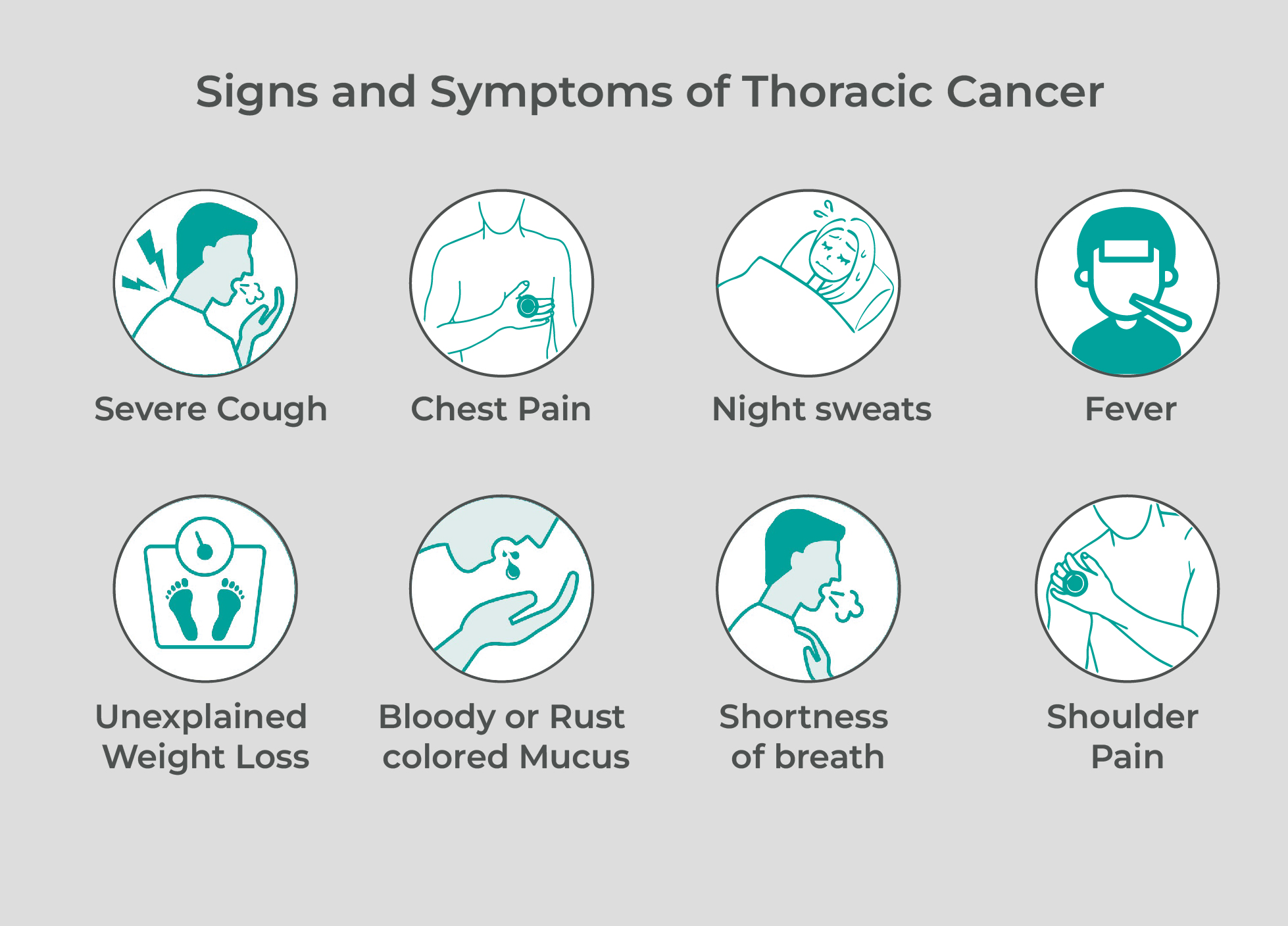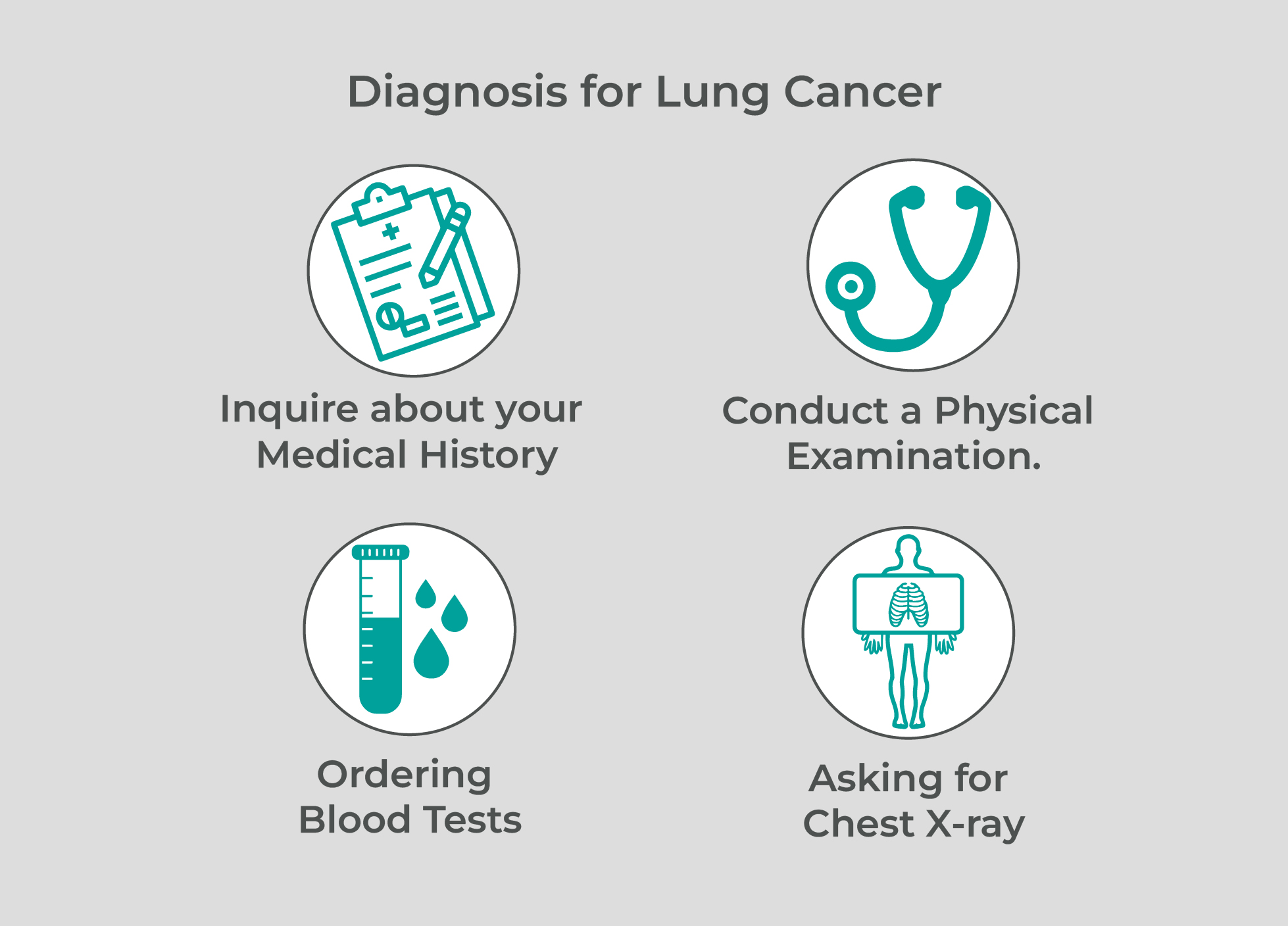What is thoracic cancer?
- Any cancer that is found in the tissues, glands, or
organs of your chest cavity is
referred to as thoracic cancer. This covers both well-known diseases like lung
cancer, which is currently the second most frequent cancer in both men and
women, and esophageal cancer, as well as less well-known cancers such as
thymus cancer and pleural cancer.
Types of thoracic cancer:
- Lung cancers, thymic cancers and tracheal (windpipe)
cancers are all included
in the category of thoracic cancer because they all develop in the chest cavity.
The vast majority of thoracic malignancies are lung cancers.
Some of the most typical malignancies of the chest cavity include:
-
Non-small cell lung cancer: Non-small cell lung tumor make up about
85% of lung cancer cases. These malignancies include adenocarcinoma,
which starts in the lung’s mucus-secreting cells, squamous cell
carcinoma, which begins in the cells that line the lungs, and big cell
carcinoma (which can begin in any part of the lung).
- Small-Cell lung cancer: The percentage of small-cell lung malignancies is
between 10%-15%. Since it can develop anywhere in the lung and
usually spreads quickly, this type of cancer is both easier to cure and
more likely to come back over time.
- Mesothelioma: In the pleura, peritoneum or other tissues that line the
abdominal cavity, mesotheliomas first appear.
- Thymic Malignancy (sometimes known as a thymoma):The thymus is a
tiny organ in the chest that controls the lymphatic system and is located
directly below the breastbone (which makes white blood cells).
Thymomas or thymic malignancies are terms used to describe cancers that develop in the thymus.
- Other malignancies:Thoracic cancer can occasionally develop from
cancers that started elsewhere in the body and spread to the lungs or
other organs in the chest cavity. These cancers include breast cancer,
pancreatic cancer and a few others.
What are the signs and symptoms of thoracic cancer?
Signs and symptoms of throat cancer are listed below as:
-
Severe Cough
- Chest pain
- Night sweats
- Fever
- Unexplained weight loss
- Bloody or rust colored mucus
- Shortness of breath
- Weakness
- Shoulder pain
-
Noticing one or more of these symptoms does not necessarily indicate that you
have cancer because they are equally frequent in other illnesses. Some
patients receive a diagnosis with no warning symptoms at all. The only way to
be certain is to go to a doctor.
Causes of Lung Cancer
- Cellular DNA has been repeatedly damaged, which
leads to cancer. Genes may
mutate if they sustain harm. The resulting aberrant cell development might go
throughout the body as a result of these abnormalities. When this unnatural
growth takes place in the chest cavity, thoracic malignancies are the result.
The exact cause of any diseases including thoracic
cancer, is unknown to
medical professionals. Age, hormones and genetics (certain cancer tend to run
in families) are biological elements that can cause cell damage and raise the
risk of developing cancer.
Environmental risk factors include exposure to
radiation from the sun or
cancer-causing chemicals like asbestos and radioactive materials.
Lifestyle changes, particularly nutrition, body
weight and smoking are
particularly important for thoracic malignancies. In actuality, smoking
significantly raises the risk of esophageal cancer and is associated with 90% of
instances of lung cancer.
Risk Factors
- Smoking is the major risk factor for thoracic cancer. Nearly all lung cancers are
caused by smoking wither currently or in the past. Particularly small cell lung
cancer is extremely uncommon in non-smokers.
Your risk increases with the length of time and number of cigarettes you
smoke. Your risk increases with the length of time and number of cigarettes
you smoke. Your risk also rises when you are around smokers. Each year,
thousands of cases of thoracic cancer are brought on by this “second-hand”
smoke.
Other typical risk elements include:
-
Exposure to radiation and radioactive materials:Radiation and
radioactive material exposure, prior cancer therapy, radon exposure and
excessive UV radiation are all risk factors for thoracic cancer.
- Workplace exposures:Exposure to asbestos, which is frequently found
in shipyards, factories and mines, for example increases the risk of lung cancer
- Exposure to additional carcinogens:In addition to silica, coal, air
pollution and diesel fumes, other carcinogens include heavy metals
including arsenic, beryllium and cadmium.
-
Family lung cancer history.
Diagnosis
- Lung cancer diagnosis may involve several steps. During your initial visit
to a healthcare professional, they will listen to your symptoms, inquire
about your medical history and conduct a physical examination.
Your doctor, ay begin by ordering blood tests and chest X-ray because
the symptoms of lung cancer are similar to those of many other, less
serious conditions.
Prevention
-
The size of the initial tumor, how deeply it penetrates the surrounding
tissue and whether it has migrated to the lymph nodes or other organs
are the main factors used to stage cancer.
There are specific staging recommendations for each form of cancer:
- Avoid Smoking:By far the most effective strategy to lower the risk of
thoracic malignancies is to avoid using tobacco products of any type,
including cigarettes. If you currently smoke, it’s best to stop as soon as possible.
- Use Proper Protective Equipment:You can lessen your risk by wearing a
mask or similar authorized protective device to prevent breathing silica,
coal dust or other known carcinogens.
- Limiting your exposure to harmful substances as much as you can.
- Preserving your general health through a healthy diet and frequent
exercise.
- Attending routine physicals.





